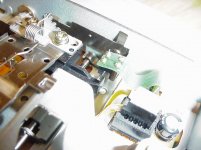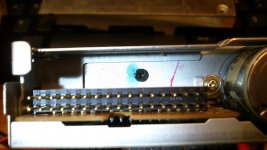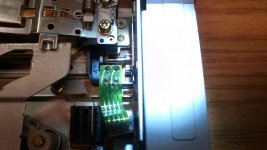Is there any information about calibration or alignment (is it the same?) of 3.5" floppy drives?
I have 2 old double-density (720 Kb) drives, and they fail reading disks written in other drives, but work perfectly with disks written in them, so I suppose they have a calibration problem.
One has the "normal" stepper motor and screw in horizontal, but the other (the oldest one) has a bigger motor vertically mounted on one of the back corners of the drive. Anyway, I can't find information about calibration for any of the 2 types.
I have 2 old double-density (720 Kb) drives, and they fail reading disks written in other drives, but work perfectly with disks written in them, so I suppose they have a calibration problem.
One has the "normal" stepper motor and screw in horizontal, but the other (the oldest one) has a bigger motor vertically mounted on one of the back corners of the drive. Anyway, I can't find information about calibration for any of the 2 types.




